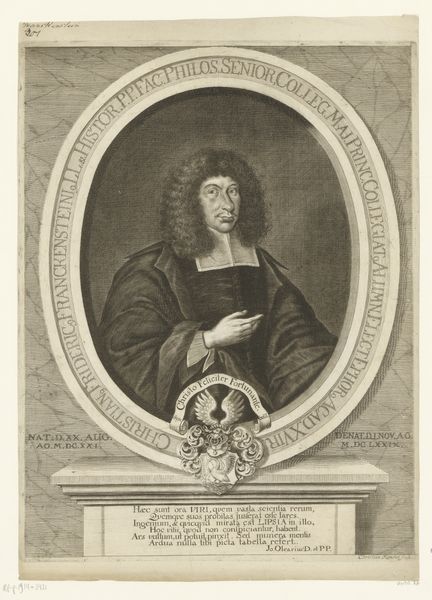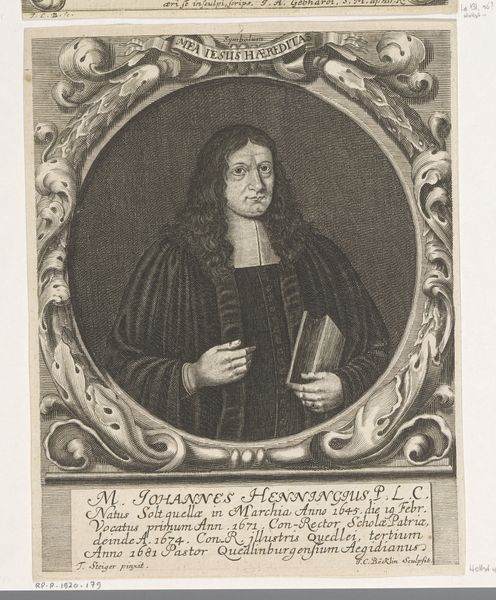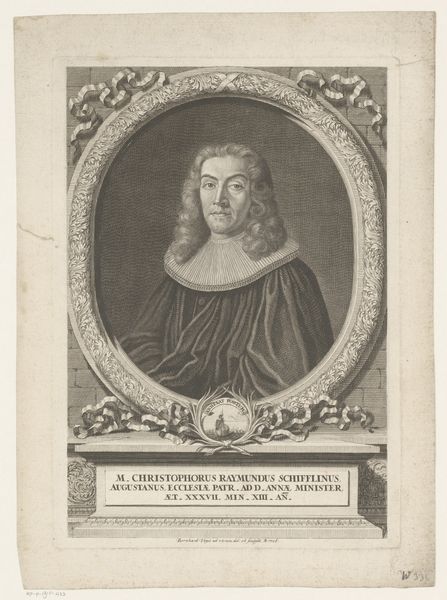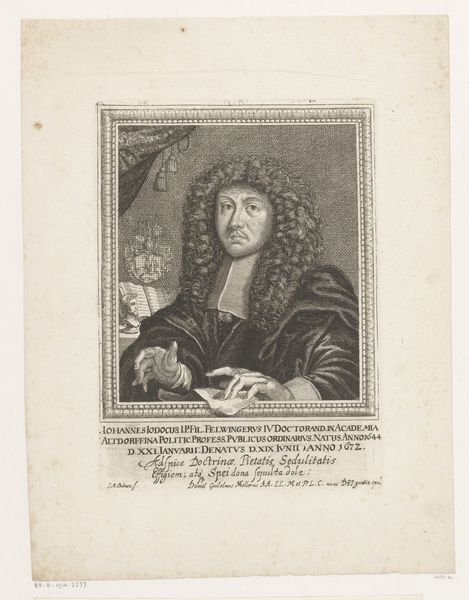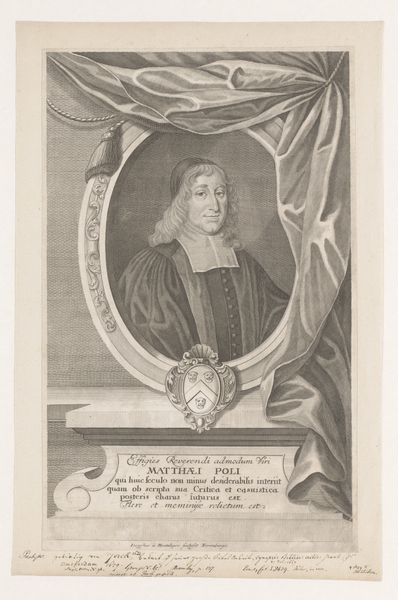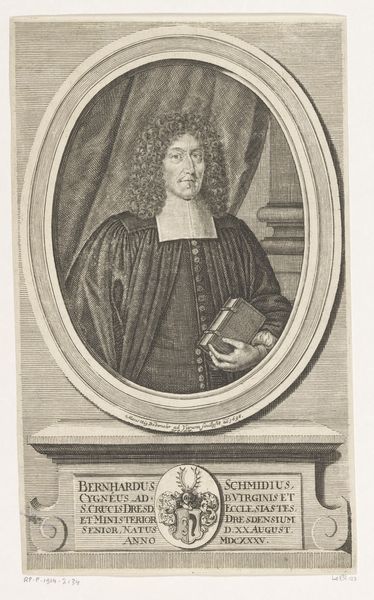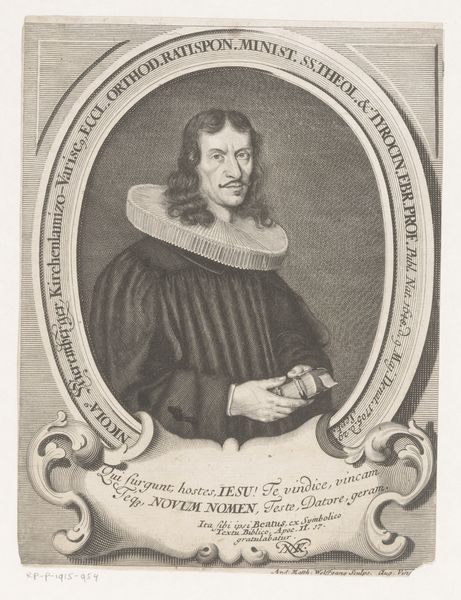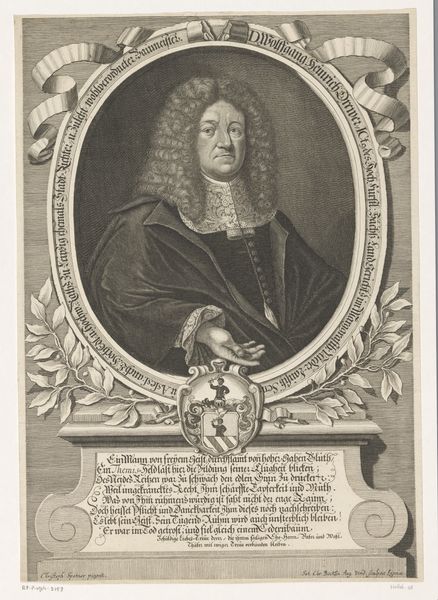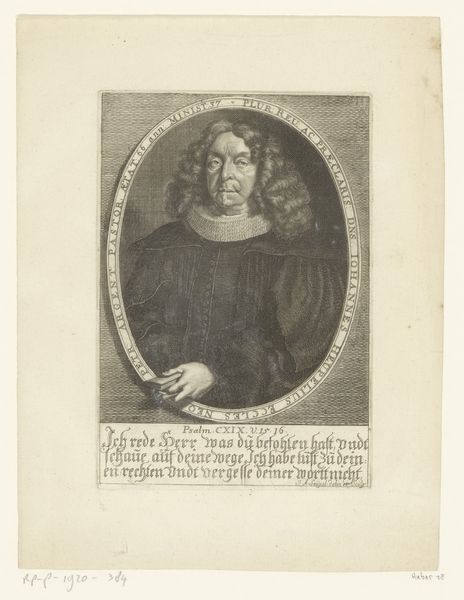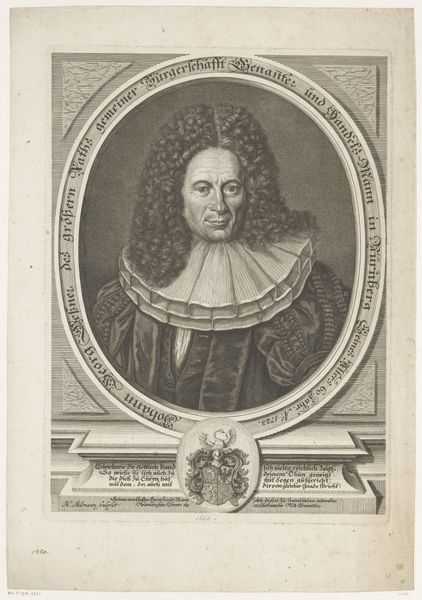
print, engraving
#
portrait
#
baroque
# print
#
pencil drawing
#
history-painting
#
academic-art
#
engraving
Dimensions: height 290 mm, width 183 mm
Copyright: Rijks Museum: Open Domain
Curator: Here we have a portrait of Johann Werger, created sometime between 1665 and 1721. It's an engraving. Editor: My first impression is of scholarly gravitas, wouldn't you agree? All those weighty tomes behind him, his hand resting on another open book. It all feels very Baroque. Curator: Indeed. Looking closer, we see the fine lines of the engraving creating depth, capturing the sitter's expression with remarkable clarity. Consider the labor invested here: each line carefully etched, contributing to both aesthetic value and as a means of circulating the subject's image. Editor: Absolutely, there's such care given to the details, even down to the way light seems to bounce off the page he's holding. He has that knowing look too, like he's about to share a profoundly simple truth. Curator: Note also the ornate frame – garlands of laurel leaves intertwined with what seems like Latin inscriptions and heraldic ribbons above the subject's head and at the bottom a cartouche bearing an epitaph. Editor: What do you make of that frame? It almost competes with the portrait itself, doesn't it? Like he's framed not just in laurel, but a sense of self-importance? Or is that unfair? Curator: The frame emphasizes the context, positioning the sitter within networks of power, patronage, and textual meaning. We see art serving to broadcast authority. The material choices communicate status. It encourages contemplation, which likely mirrored the subject's own intellectual life. Editor: It really draws me in. Though formal, the lines offer such depth. It speaks volumes of the period and the character within. A real testament to both subject and artistic processes, wouldn’t you say? Curator: Precisely. It reveals art's inextricable tie to socio-economic standing. We have here more than a likeness, but an index of material culture itself.
Comments
No comments
Be the first to comment and join the conversation on the ultimate creative platform.
